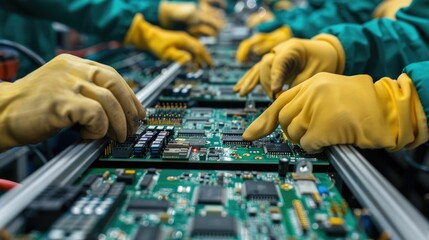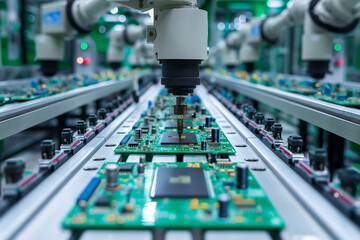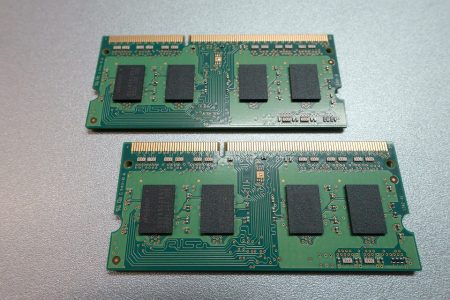- +86-755-23012705
- Building 3, Jinfeng Industrial Park, Fuyong Street, Baoan District, Shenzhen ,China
- [email protected]
In the world of electronics manufacturing, the efficiency of surface mount technology (SMT) production is crucial for delivering high-quality products in a timely manner. One often-overlooked factor that significantly influences SMT efficiency is PCB panel design. A well-thought-out panel design not only streamlines the manufacturing process but also enhances product reliability and reduces costs. In this blog, we will explore how PCB panel design impacts SMT production efficiency, examining various aspects such as layout optimization, material utilization, and automation compatibility.
PCB panel design refers to the arrangement and organization of multiple PCBs on a single manufacturing panel or substrate. This approach is commonly used in SMT production to maximize the efficiency of assembly and reduce waste. A well-designed panel allows for the simultaneous processing of multiple PCBs, which can significantly shorten production times and lower per-unit costs.

One of the most critical aspects of PCB panel design is layout optimization. The arrangement of components on a panel affects how quickly and accurately they can be assembled during the SMT process. Here are some key considerations for optimizing PCB layouts:
Component Placement: Proper placement of components can reduce the time needed for pick-and-place machines to assemble the PCBs. By grouping similar components together and minimizing the distance the pick-and-place head must travel, manufacturers can enhance efficiency.
Minimizing Lead Lengths: Shorter lead lengths between components can improve signal integrity and reduce the risk of interference, which is particularly important in high-frequency applications. Additionally, shorter leads allow for faster soldering and assembly.
Solder Paste Application: The design of the panel should facilitate even solder paste application across all PCBs. Inconsistent paste deposition can lead to defects, which may require rework and further slow down production.
Efficient material utilization is another essential aspect of PCB panel design. By optimizing the size and shape of the panels, manufacturers can minimize waste and maximize the number of usable boards per panel. Here’s how effective material utilization impacts SMT production efficiency:
Reduced Scrap: An optimized panel design can reduce the amount of scrap generated during the manufacturing process. Less scrap translates to lower material costs and less environmental impact, making the production process more sustainable.
Standardization: Designing panels to standard sizes can simplify the manufacturing process. Standardization allows manufacturers to use the same equipment settings and processes across different production runs, improving consistency and reducing setup times.
Panel Breakaway Features: Incorporating breakaway tabs or grooves in the design allows for easier separation of individual PCBs after assembly. This feature can speed up the post-assembly process, contributing to overall production efficiency.

As automation becomes increasingly prevalent in electronics manufacturing, ensuring that PCB panel designs are compatible with automated processes is vital for enhancing SMT production efficiency. Here are some considerations for automation:
Alignment Features: Including alignment features in the panel design can help automated pick-and-place machines accurately position components. These features ensure that the machines operate efficiently and minimize errors during assembly.
Test Access: Designing panels with test points or access holes facilitates automated testing of individual PCBs after assembly. This capability allows manufacturers to quickly identify and address defects, reducing the time needed for quality control.
Component Orientation: Ensuring that components are oriented correctly on the panel can help reduce the complexity of automated assembly. Simplifying the orientation of components can enhance the speed and accuracy of pick-and-place operations.
The overall impact of PCB panel design on SMT production efficiency ultimately affects cycle time and production costs. A well-designed panel can lead to:
Faster Production Cycles: By optimizing layouts and ensuring compatibility with automated processes, manufacturers can reduce production cycle times significantly. Faster cycles enable companies to meet customer demand more effectively and improve turnaround times.
Lower Manufacturing Costs: Efficient material utilization and reduced scrap result in lower manufacturing costs. Additionally, minimizing rework and defects due to poor design contributes to overall cost savings.
Enhanced Product Quality: A thoughtful panel design that considers factors like signal integrity and ease of testing can lead to higher-quality products. Improved quality translates to fewer returns and repairs, further benefiting the bottom line.

In the competitive landscape of electronics manufacturing, the design of PCB panels plays a pivotal role in SMT production efficiency. By focusing on layout optimization, material utilization, and automation compatibility, manufacturers can enhance production processes, reduce costs, and improve product quality.
As the demand for high-quality electronics continues to grow, investing time and resources into effective PCB panel design will be essential for manufacturers seeking to remain competitive. By recognizing and addressing the impact of panel design on SMT efficiency, companies can pave the way for innovation and success in their production processes.
Simplify Your PCB Journey with XPCB Limited
XPCB Limited simplifies the PCB process for you. With our quick-turnaround prototyping and turnkey PCBA services, we ensure that your projects move forward smoothly and efficiently. Trust our commitment to quality and timeliness as we help you bring your designs to life. Choose XPCB Limited for a hassle-free PCB experience.






XPCB Limited is a premium PCB & PCBA manufacturer based in China.
We specialize in multilayer flexible circuits, rigid-flex PCB, HDI PCB, and Rogers PCB.
Quick-turn PCB prototyping is our specialty. Demanding project is our advantage.
Tel : +86-136-3163-3671
Fax : +86-755-2301 2705
Email : [email protected]
© 2024 - XPCB Limited All Right Reserve
